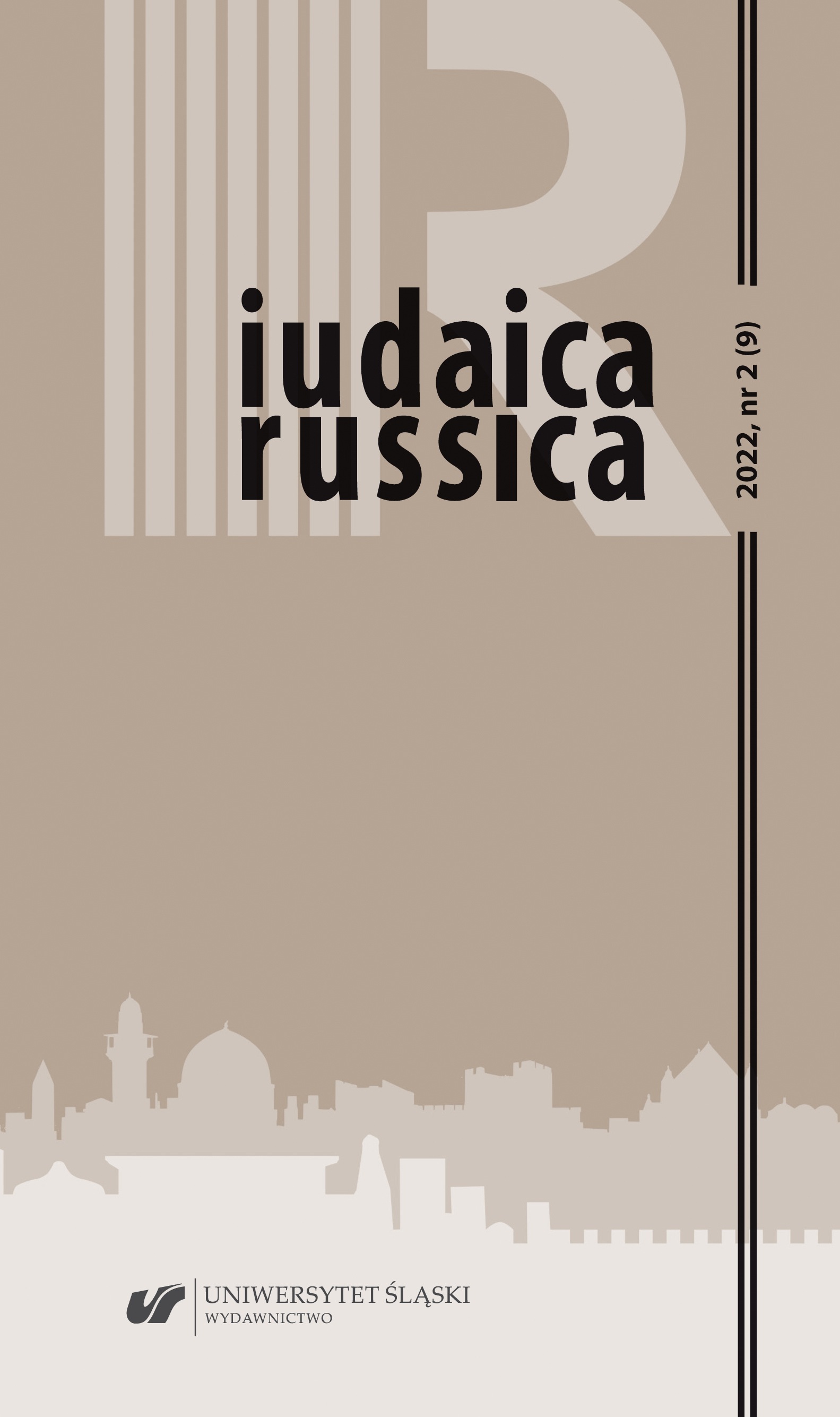Bartmiński J., „Dom i świat — opozycja i komplementarność”, w: J. Bartmiński, Językowe podstawy obrazu świata, Wydawnictwo UMCS, Lublin 2006, s. 167–177.
Google Scholar
Grzegorczykowa R., Obraz przestrzeni, w: Świat widziany poprzez słowa. Szkice z semantyki leksykalnej, Wydawnictwo Uniwersytetu Warszawskiego, Warszawa 2012, s. 171–213.
Google Scholar
Maciejewska А., „Zwyczajnie o domu” — językowy obraz świata domu w tekstach studentów, „Сonversatoria Linguistica” 2010, IV, s. 34–44.
Google Scholar
Borodulin V., Gorkin, A., Gusev A., i dr. (red.), Novyy illyustrirovannyy entsiklopedicheskiy slovar’, Nauchnoye izdatel’stvo “Bol’shaya Rossiyskaya entsiklopediya”, Moskva 2005 [Бородулин, В., Горкин A., Гусев А., и др.(ред.), Новый иллюстрированный энциклопедический словарь, Научное издательство «Большая Российская энциклопедия», Москва 2005].
Google Scholar
Gzhegorchikova R., Ponyatiynaya oppozitsiya verkh- niz (pol. ‘wierzch’ – ‘spód’) i yazykovaya model’ prostranstva, in: Logicheskiy analiz yazyka. Yazyki prostranstv, Yazyki russkoy kul’tury, Moskva 2000, pp. 78–83 [Гжегорчиковa Р., Понятийная оппозиция верх- низ (пол. ‘wierzch’ – ‘spód’) и языковая модель пространства //Логический анализ языка. Языки пространств, Языки русской культуры, 2000, с. 78–83].
Google Scholar
Evgen’yeva A., (ed.), Slovar’ russkogo yazyka v 4–kh t., t. III, Russkiy yazyk, Moskva 1987 [Евгеньева А. (ред.), Словарь русского языка в 4–х т., т. III, Русский язык, Москва 1987].
Google Scholar
Efremova T., Sovremennyy tolkovyy slovar’ russkogo yazyka, t. II, Astrel’–AST, Moskva 2006 [Ефремова Т., Современный толковый словарь русского языка, т. II., Астрель–АСТ, Москва 2006].
Google Scholar
Kikhney L., Galayeva M., Lokus doma v liricheskoy sisteme Anny Akhmatovoy, in: Vostok – Zapad: Prostranstvo russkoy literatury, materialy Mezhdunarodnoy nauchnoy konferentsii, Volgogradskoye nauchnoye izdatel’stvo, Volgograd 2005, pp. 237–247 [Кихней Л., Галаева М., Локус дома в лирической системе Анны Ахматовой // Восток – Запад: Пространство русской литературы, материалы Международной научной конференции, Волгоградское научное издательство, Волгоград 2005, c. 237–247].
Google Scholar
Kobozeva I., Grammatika opisaniya prostranstva, in: Logicheskiy analiz yazyka. Yazyki prostranstv, Yazyki russkoy kul’tury, Moskva 2000, pp. 152–162 [Кобозева И., Грамматика описания пространства // Логический анализ языка. Языки пространств, Языки русской культуры, Москва 2000, c. 152–162].
Google Scholar
Kobozeva I., Kak my opisyvayem prostranstvo, kotoroye vidim: kompozitsionnyye strategii, in: Trudy mezhdunarodnogo seminara Dialog’97 po komp’yuternoy lingvistike i yeyë prilozheniyam, RosNII Iskusstvennogo intellekta, Yasnaya Polyana, pp. 132–135 [Кобозева И., Как мы описываем пространство, которое видим: композиционные стратегии // Труды международного семинара Диалог’97 по компьютерной лингвистике и её приложениям, РосНИИ Искусственного интеллекта, Ясная Поляна 1997, c. 132–135].
Google Scholar
Kobozeva I., Kak my opisyvayem prostranstvo, kotoroye vidim: problema vybora oriyentira, in: Trudy mezhdunarodnogo seminara Dialog’95 po komp’yuternoy lingvistike i eyë prilozheniyam, Izdatel’stvo Kazanskogo universiteta, Kazan’ 1995, pp. 146–153 [Кобозева И., Как мы описываем пространство, которое видим: проблема выбора ориентира // Труды международного семинара Диалог’95 по компьютерной лингвистике и её приложениям, Издательство Казанского университета, Казань 1995, c. 146–153].
Google Scholar
Kolesov V., Kolesova D., Kharitonov A., Slovar’ russkoy mental’nosti, t. 1, Zlatoust, Sankt-Peterburg 2014 [Kолесов В., Колесова Д., Харитонов А, Словарь русской ментальности, т. 1, Златоуст, Санкт-Петербург 2014].
Google Scholar
Kuznetsov S., (ed.). Bol’shoy tolkovyy slovar’ russkogo yazyka, Norint, Sankt-Peterburg 2000 [Кузнецов С (ред.)., Большой толковый словарь русского языка, Норинт, Санкт-Петербург 2000].
Google Scholar
Levinson S., Space in language and cognition. Explorations in Cognitive Diversity, Cabridge University Press, Cambridge 2003.
Google Scholar
Levontina I., Shmelëv A., Rodnyye prostory, in: Logicheskiy analiz yazyka. Yazyki prostranstv, Yazyki russkoy kul’tury, Moskva 2000, pp. 338–347 [Левонтина И., Шмелёв А., Родные просторы // Логический анализ языка. Языки пространств, Языки русской культуры, Москва 2000, c. 338–347.
Google Scholar
Lotman Y., Problemy khudozhestvennogo prostranstva v proze N.V. Gogolya, in: Trudy po russkoy i slavyanskoy filologii, vyp. 202, Tartu 1968 [Лотман Ю., Проблемы художественного пространства в прозе Н.В. Гоголя // Труды по русской и славянской филологии, вып. 202, Тарту 1968].
Google Scholar
Mungalov V., Psikhologicheskiye prostranstva cheloveka, “Sibirskiy psikhologicheskiy zhurnal” 2012, no. 45, pp. 104–111 [Мунгалов В., Психологические пространства человека, «Сибирский психологический журнал» 2012, № 45, с. 104–111].
Google Scholar
Podol’skiy B., Bol’shoy ivrit-russko-ivritskiy slovar’ <https://www.slovar.co.il/translate.php> [Подольский Б. Большой иврит-русско-ивритский словарь <https://www.slovar.co.il/translate.php>].
Google Scholar
Prokof’yeva V., Kategoriya prostranstvo v khudozhestvennom prelomlenii: lokusy i toposy, “Vestnik Orenburgskogo gosudarstvennogo universiteta” 2005, no. 11, pp. 87–94 [Прокофьева В., Категория пространство в художественном преломлении: локусы и топосы, «Вестник Оренбургского государственного университета» 2005, № 11, с. 87–94].
Google Scholar
Pykhtina Y., K probleme ispol’zovaniya prostranstvennoy terminologii v sovremennom literaturovedenii. “Vestnik Orenburgskogo gosudarstvennogo universiteta” 2013, no. 11(160)/noyabr’, рр. 29–36 [Пыхтина Ю., К проблеме использования пространственной терминологии в современном литературоведении, «Вестник Оренбургского государственного университета» 2013, № 11(160)/ноябрь, c. 29–36].
Google Scholar
Subbotina T., Lokus, topos, urbonim, mikrotoponim: k voprosu o soderzhanii prostranstvennykh ponyatiy, “Vestnik Chelyabinskogo gosudarstvennogo universiteta” 2011, no. 24, pp. 111–113 [Субботина Т., Локус, топос, урбоним, микротопоним: к вопросу о содержании пространственных понятий, «Вестник Челябинского государственного университета» 2011, № 24, c. 111–113].
Google Scholar
Shchukina D., Prostranstvo v khudozhestvennom tekste i prostranstvo khudozhestvennogo teksta, Izdatel’stvo Filologicheskogo fakul’teta Sankt-Peterburgskogo gosudarstvennogo universiteta, Sankt-Peterburg 2003 [Щукина Д., Пространство в художественном тексте и пространство художественного текста, Издательство Филологического факультета Санкт-Петербургского государственного университета, Санкт-Петербург 2003].
Google Scholar
Yulayeva T., Evreyskiy dom, “Jewish Secret” <https://jewish-secret.com/evreyskiy-dom/> [Юлаева, Т., Еврейский дом, “Jewish Secret” < https://jewish-secret.com/evreyskiy-dom/>].
Google Scholar


 https://doi.org/10.31261/IR.2022.09.03
https://doi.org/10.31261/IR.2022.09.03

 10.31261/IR
10.31261/IR